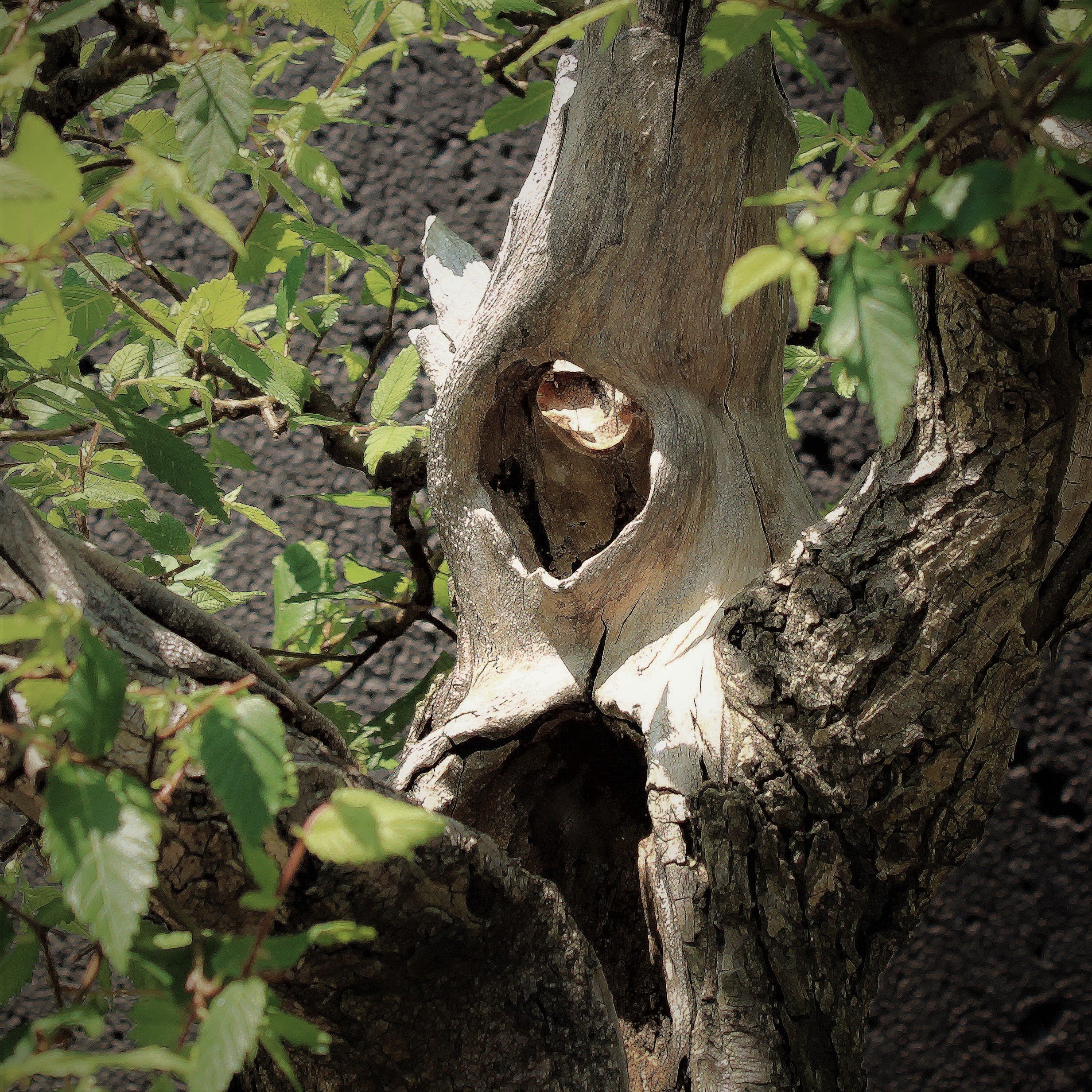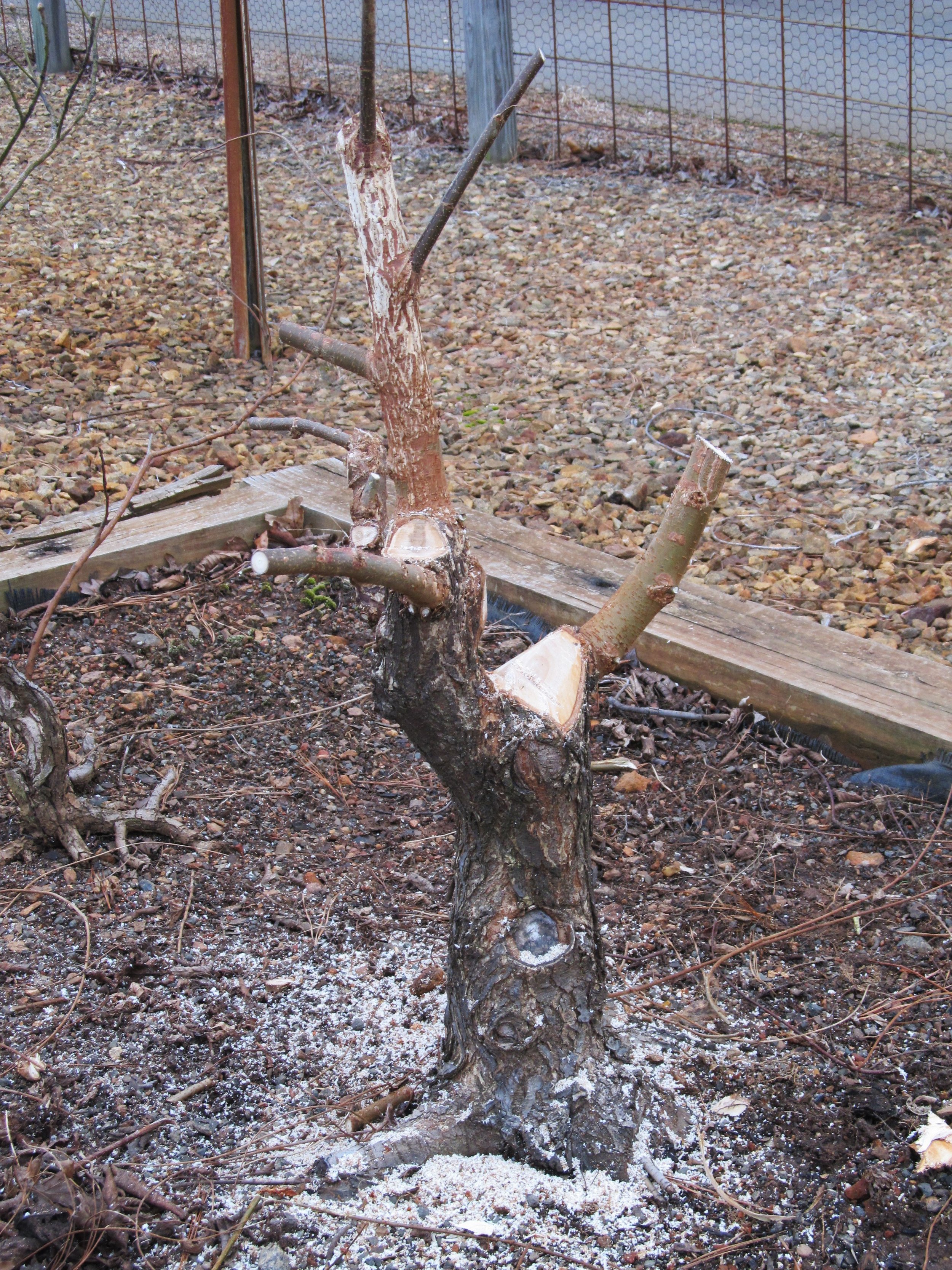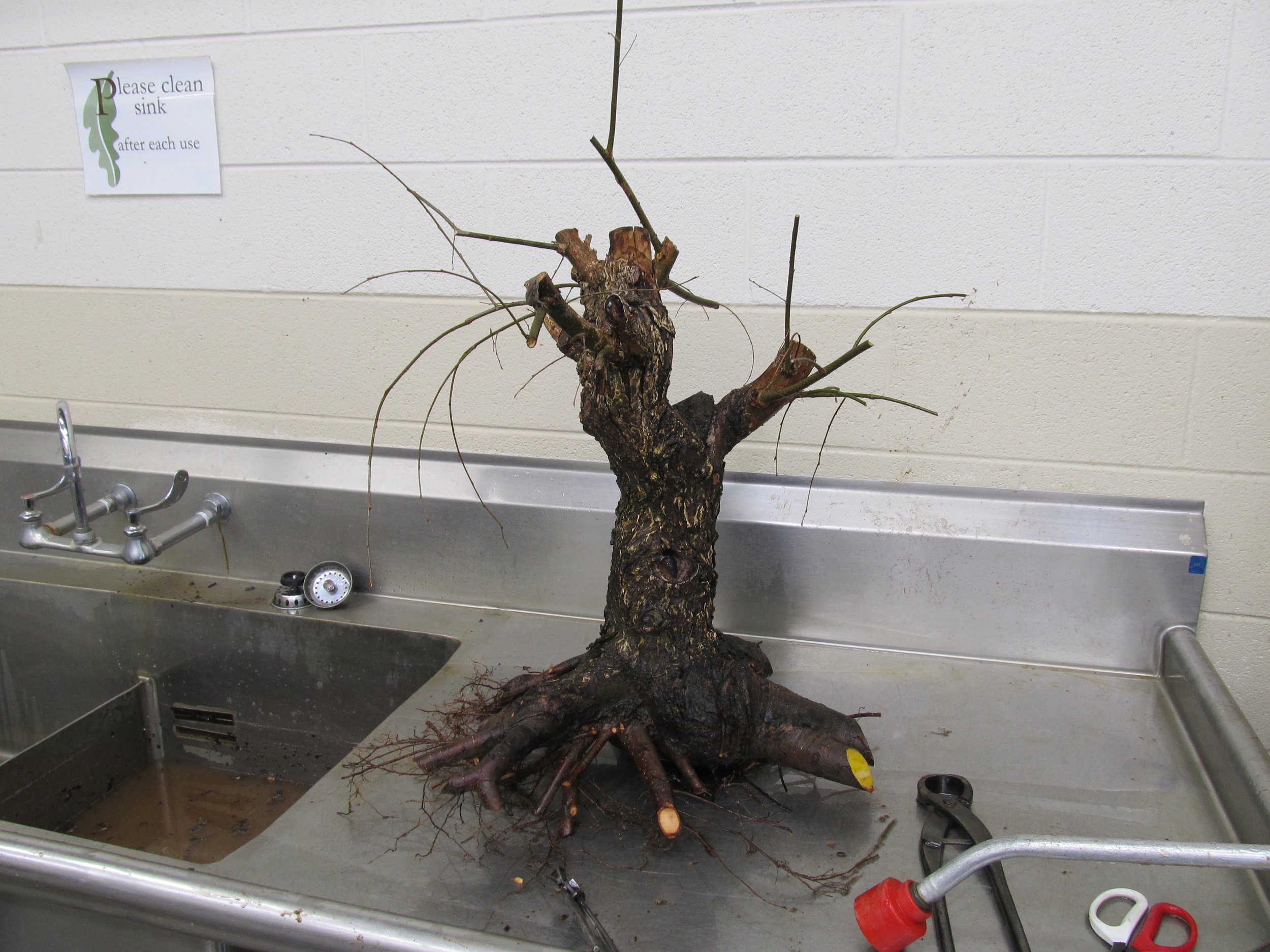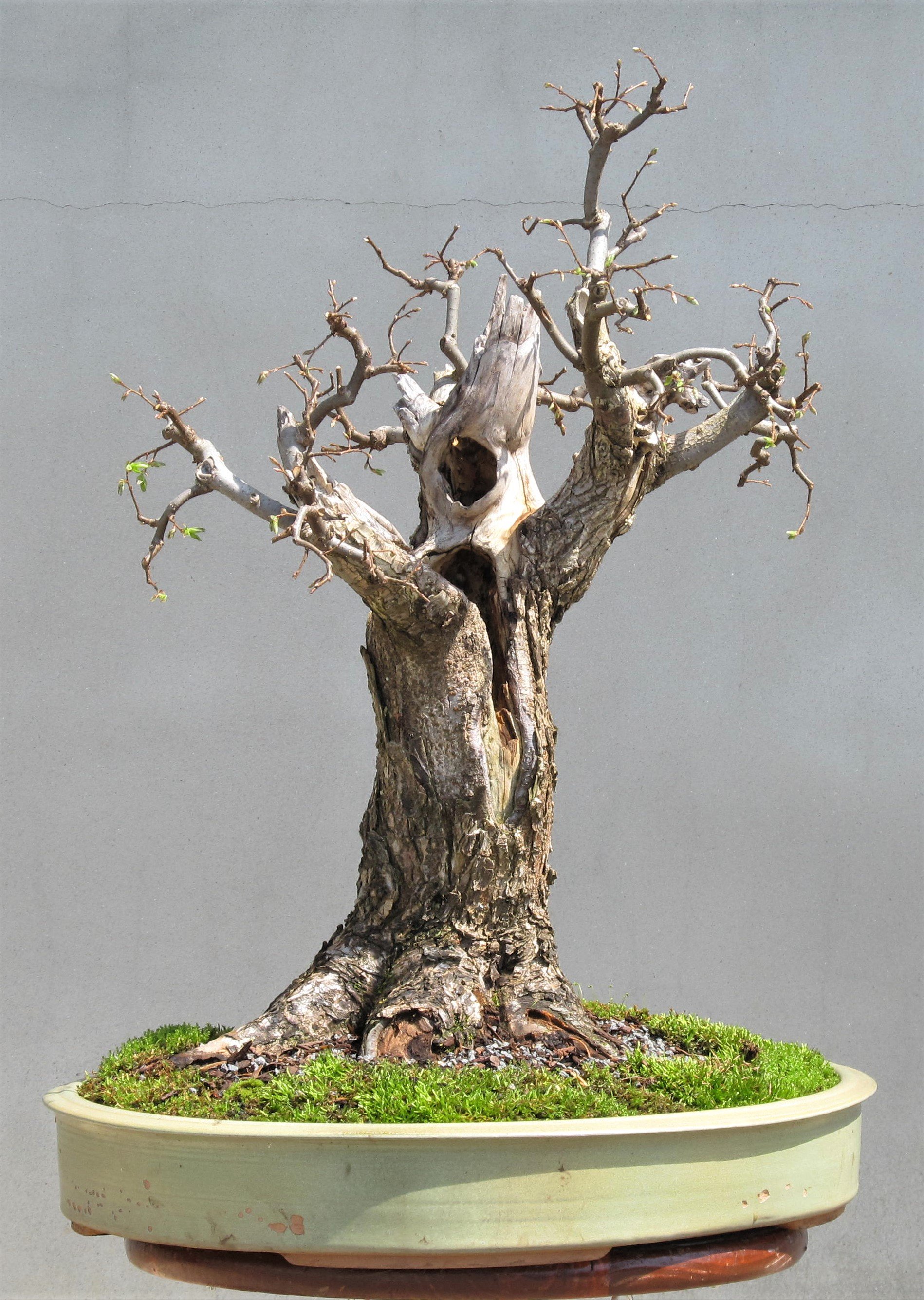American Elm
Back when bonsai at the Arboretum first started and I was busy learning how to do my new job, I had the advantage of working with an abundance of plant material. In addition to the trees in the donation that started us off were a great many young, containerized woody plants that were being produced from seed in the Arboretum's nursery. I was assistant to the nursery manager at the time and knew what we were growing, and I had access to those plants. There was plenty to do with the donated bonsai collection because those plants were not in good condition when we received them. My first priority working with them was to restore the health of the plants, followed by trying to rebuild them as bonsai, mostly following the lead of whomever had worked on them previously. But I also wanted to have the experience of starting bonsai from scratch with young, untrained plants. Excess from the nursery production gave me the material needed to do that.
One of those excess nursery plants was an American elm (Ulmus americana). I knew that Chinese elm (Ulmus parvifolia) worked well for bonsai so it seemed possible that the American species might too, and because one was available it was worth a try. This early period of taking young nursery plants and introducing them to bonsai culture happened in haphazard fashion. Bonsai was a side venture for me at this point, nursery work taking precedence, so I worked in random snatches when time allowed. As a result, no notes were made or pictures taken, and the origin story for this tree is a little sketchy. The American elm I was trying to make into a bonsai would have been started from seed in the early to mid 1990s, and was less than five years old at the time I started working with it. The first photograph I have of it is from 2005:
I was attempting to build a bonsai representing what is often thought of as the classic elm form, usually described as being vase-like. In bonsai parlance this tree form is referred to as a broom. It is a growth habit that made American elm a favored species for planting in parks and along suburban streets, where the shade thrown by its spreading crown brought welcome relief from summer sun:
Perhaps at the time of the 2005 photo I was still hoping to achieve the broom or vase-like shape, but within a few years I no longer thought the effort would amount to anything. American elms are considered graceful trees, and my bonsai elm was not. Because I felt like the problem was mostly with the trunk, and particularly in vicinity of the place on the trunk where the first limb branched off, I didn't think it could be reasonably fixed. In recognition of this unhappy reality, I took the tree out of its bonsai pot, replanted it in a large plastic tub, and stopped pruning on it. Although the trunk was not agreeable there were several branches that had developed nicely and in 2009 a few of them were chosen to be air-layered. This turned out to be the opening move in another, more successful attempt at creating an American elm bonsai.
Air layering is a propagation technique wherein part of a plant is manipulated in a way that causes it to grow its own roots, and then that part is removed from the parent plant and begins a new existence as an independent plant. In this case, branches were removed from the American elm and then potted up and grown on as new and separate trees. Here is an image of the original elm planted in the plastic tub, after the first part of the air-layering work had been done:
Here is a closer look at several of the limbs in the process of being air layered (note the roots clearly showing in one of the plastic-wrap bundles):
Only a short time after the above photos were made the air-layered limbs were detached from the parent tree and planted in their own plastic training pots. Unfortunately, no photographs exist of this part of the operation. Within three years’ time, however, three of the new elms were put together as a group to make a new bonsai, as shown in the following photograph. Each of these little trees was previously a branch growing on the original elm:
A fourth elm created from that same round of air layering was planted in an in-ground growing bed. This is the tree whose story is being told now, and this is how it looked in February of 2012:
The purpose of taking a tree being trained as a bonsai and planting it in the ground is to fatten up its trunk. The tree's roots can spread out in the ground and grow unrestrained, resulting in an increased growth rate over what might be attained if grown in a container for an equal amount of time. We usually let a tree being handled this way grow for a year between prunings. The first year is all about the tree establishing itself in a new environment. It grows unchecked all year, then in late winter or very early spring of the following year the above-ground growth is cut back hard. The resulting regrowth is often rank, shooting up higher than a person stands tall, and this vigorous activity accelerates trunk development. That growth is allowed to remain until the following winter is nearly over and then we cut it back strongly again. The process is repeated for as many years as it takes to produce a satisfyingly big trunk. We usually grow them in the ground for about five or six years, and customarily leave the roots undisturbed during that time.
This gallery shows how one cycle of that cut-and-grow process worked with the American elm (click any image for the full view):
In March of 2016 the tree had bulked-up sufficiently and was ready to be dug out of the ground and returned to life in a container. First, it received the usual hard pruning (click on image for full view):
Once removed from the growing bed, the tree was brought into the shop and the field soil was washed off:
Roots were then pruned back strongly (click on image for full view):
Finally, the American elm was planted in a large wooden box:
For three growing seasons the tree lived in the wooden box without further root pruning, all the while producing vigorous top growth which was pruned multiple times each year. In October of 2018 it looked like this:
At this point the American elm was ready for a big next step. In March of 2019 the branch structure was shaped up for the coming growing season, and the dead wood was carved to create visual interest. Then the tree was removed from the box, root pruned and planted in an old bonsai pot that was large enough for the job. This was not a pot for show but a training pot, a step down in overall size from the big box. Here is how it appeared in April of 2019 after new leaves emerged on the branch tips:
Those new leaves were welcome testimony to the tree having successfully come through another important step in its journey to becoming a showable specimen.
The elm grew with vigor over the course of 2019 season. It was pruned back numerous times, each round of cutting and growing increasing the presence of fine branching in the crown. The following gallery shows before and after images from one such pruning session, as seen from two opposite vantage points (click on image for full view):
In 2021, after one year of growth in a bonsai pot, it was time to prune the roots again. Here is what they looked like, before and after pruning:
The tree was put back into the same pot for one more year:
All was going very well with this specimen's development; it was time to find the right container for it to live in. For that we turned to Eli Akins of Waldo Street Pottery in Atlanta. Eli is a fine bonsai potter, and one of relatively few in this country who can produce large pots of high quality. We requested a round container, 21" in diameter and 6" deep, and left it to Eli to determine the style. Here is the tree soon after being repotted in early 2021, modeling three different possible presentation views (click on image for full view):
In May of 2021 the American elm finally made its debut in the bonsai garden:
It had taken more than twenty years for this specimen to make it to the big show, starting from when the tree was a very young piece of excess nursery material chosen to be part of an educational experiment.
The telling of this particular tree's story should make one point plainly clear: It takes time to build a bonsai. Woody plants, even vigorous growers like American elms, develop at a rate most people find rather slow. On top of that, the ability level of the person attempting to do the training of the plant has to be taken into account, and then come the hazards of chance along the way. Many plants are aimed for a bonsai future, but few actually make it.
All possibilities considered, this particular American elm bonsai developed quickly and has so far lived a fortunate life! That is the definitive story, but the suggested story is altogether different.
As a bonus feature, we are pleased to share with you a new video made by Ben Kirkland of Appalachian Bonsai. It captures a pivotal day in March of 2019 when substantial work was done on this tree. The events of that day were briefly described with a short paragraph earlier in this article, but the video gives a better sense of how much is involved in such a session. Even so, an entire day’s worth of work is represented by a video program of little more than half an hour. That day was itself but one step in a creative process that played out over the span of two decades. This element of time, and the sustained investment of human thought, care and energy over the course of many years, is a key component in the compelling art of bonsai.
Thank you Ben, for an excellent presentation!



































